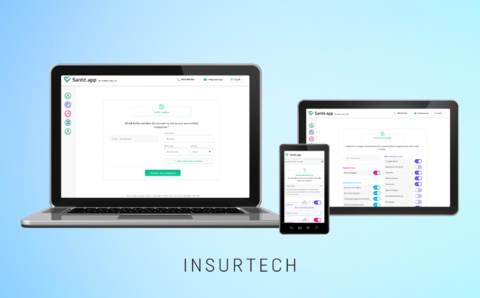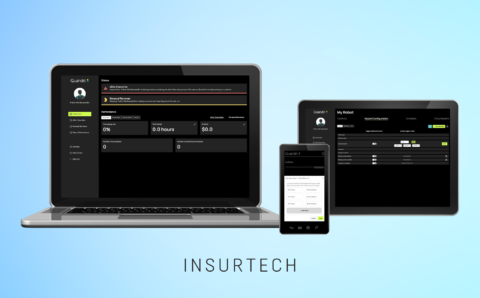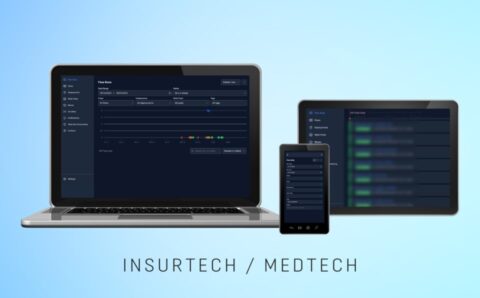
Automation is a driving strategy for businesses in almost any domain, such as healthcare, finance, insurance, hospitality, real estate, and many more, with the constantly rising number of market players already adopting robotic process automation (RPA). This is the technology that allows software robots to simulate manual activities and take over logic-driven daily tasks so valuable human resources can redirect their efforts to more complex work.
In fact, according to Deloitte, 59% of companies are already adopting Robotic Process Automation (RPA), and this figure is predicted to increase to 72% in the next two years. Undoubtedly, this happens for a reason, as RPA provides a range of pros across diverse aspects, like improved compliance (92%), enhanced quality and accuracy (90%), boosted productivity (86%), and cost decrease (59%). However, to achieve such prosperous outcomes, selecting the right tech stack for RPA implementation is essential.
Python is a tried-and-true tool for implementing RPA, offering simplicity, versatility, and a rich ecosystem of libraries. As an open-source language, Python offers rapid development and easy integration with other systems, which is a significant aspect in terms of automating a wide range of business processes. It has syntax and a solid support community that also lowers the barrier to entry, allowing organizations to deploy RPA solutions quickly and efficiently. The combination of robotic process automation (RPA) and Python has the potential to transform the intelligent automation landscape.
Choosing Python for RPA means using a robust, flexible, and future-proof language that accelerates automation and scales with your RPA capacity to match your business needs. In this post, you’ll get acquainted with the list of Python robotic process automation benefits and define the value it can bring to your specific case.
Table of Contents:
What is Robotic Process Automation (RPA)?
Robotic Process Automation (RPA) is a technology that is represented in the form of software robots to automate repetitive and rule-based, algorithmic tasks traditionally performed by humans. RPA can interact with other software products, websites, and databases just as a human would, but at an accelerated speed and with higher accuracy. RPA can imitate user actions such as clicking, typing, and extracting data, seamlessly integrating with the existing tech ecosystem without the need for extensive coding or complex infrastructure changes.
The modern business environment has raised the need for solid RPA services as more entrepreneurs seek to integrate automation into their workflows. Companies are under constant pressure to do more with less, and automation is vital to maintaining competitiveness. RPA elevates efficiency, allowing employees to delegate a part of tasks and allowing them to focus on strategic, high-value activities that require human engagement and creative thinking. Furthermore, RPA ensures consistency and accuracy, reducing errors that can be costly and damaging to a business’s reputation.
RPA is a critical tool for driving growth, improving service delivery, and maintaining a competitive edge. The adoption of RPA is not an option; instead, it turns into a necessity for businesses aiming to thrive in the modern economy.
Why Use Python for Robotic Process Automation?
Python is one of the go-to languages for Robotic Process Automation (RPA) due to its outstanding adaptability, extensive automation libraries, and cross-platform compatibility, which collectively streamline the creation and deployment of automation scripts. Businesses worldwide are applying to reliable tech providers for qualitative Python development services. As an output, they can obtain fully-fledged, accurate, and high-performing software that robotizes repetitive tasks, cuts down operational costs, and increases efficiency.
The critical benefit of robotic process automation with Python lies in the simplicity of this programming language. It has a clean, readable syntax, which facilitates quicker adoption and implementation of RPA solutions. Conciseness and ease of use help businesses develop automation scripts faster and decrease the number of errors.
Besides that, Python, which always stays among the top three most widely employed programming languages, according to Statista, equips technicians with a rich ecosystem of libraries and frameworks specifically designed for automation. Tools like Selenium facilitate web-based task automation, while PyAutoGUI enables interaction with desktop interfaces. On the other hand, Robot Framework provides a robust, keyword-driven approach to testing and automation, and BeautifulSoup optimizes web scraping for data extraction. These libraries make Python a versatile choice, capable of handling a broad array of automation needs.
Key Benefits of Implementing RPA with Python
Implementing RPA with Python can boost efficiency, as Python’s flexibility allows for easily automating complex, repetitive tasks. Robotic process automation for small businesses and larger enterprises can ensure a solid reduction in processing time thanks to Python’s robust libraries and seamless integration capabilities. Besides, error rates can drop due to the Python-based automation accuracy, improving overall accuracy and reliability in operations.
Cost-Effectiveness
Python’s open-source concept allows for a significant reduction in the cost of RPA implementation. There are no licensing fees, and its solid library support cuts down on development time, resulting in faster, more affordable deployment.
Flexibility and Scalability
Whether your business requires automating simple repetitive tasks or sophisticated workflows, Python is up to the challenge. It is versatile and can be adapted to diverse business requirements, ensuring that your RPA solutions can grow with your organization.
Integration Capabilities
Python is flawless at integrating with other technologies and systems, coping with modern cloud platforms or legacy applications. Seamless integration ensures that you can create RPA using Python that can work in a perfect balance within your current solution stack.
Rapid Development and Deployment
Python provides a simple syntax and powerful libraries that enable fast prototyping and accelerated deployment of RPA software. Therefore, businesses can reduce time-to-market and enhance agility.
Error Reduction and Consistency
Automation with Python minimizes human errors by executing tasks based on predefined rules and scripts, eliminating the variability and mistakes associated with manual processes. Python brings in precise logic and error-handling capabilities to ensure that tasks are consistently performed the same way every time. Aside from that, automated workflows can cover validation checks and exception handling, which catch and correct potential errors in real time, ensuring reliable and standardized outputs across operations.
Improved Productivity
By automating frequently-made tasks, Python-based RPA frees employees’ resources. They can shift their efforts to execute more strategic, value-added responsibilities, driving innovation and business growth.
Data Handling and Analysis
Python’s robust data processing capabilities allow for efficient handling, analysis, and reporting of large datasets, turning raw data into actionable insights effortlessly. In fact, data processing with Python is optimized with the adoption of its extensive libraries, like Pandas and NumPy, which simplify data manipulation and analysis. This makes Python perfect for data-driven decision-making, delivering results that can then elevate business strategies and skyrocket its performance.
How Much Does RPA Cost?
Explore the factors affecting RPA implementation costs and learn how to optimize your investment effectively.
Real-World Examples of Python in RPA
RPA is redefining workflows across various industries, enhancing efficiency and accuracy. The implementation of RPA in Python allows businesses to increase their productivity due to the performance delegated to automation. Let’s overview some of the popular domains that can take advantage of robotic process automation using Python and provide examples of usage.
Finance
In the financial sector, RPA handles data entry, reconciliation, and compliance reporting tasks. For example, banks can use RPA to process loan applications, reducing approval times significantly and minimizing manual errors.
Insurance
There are also many benefits of RPA in insurance, such as claims processing, policy management, and customer support. Automated systems can handle claims with speed and accuracy, renew policies automatically, and respond to customer inquiries through virtual assistants, enhancing customer experience and efficiently managing policy lifecycles.
We can also mention some examples of successful RPA projects implemented using Python. One of them is Quandri, which is aimed at enhancing the insurance industry’s workflows.
Quandri’s Robot Factory is designed to cater to the domain-specific challenges encountered by insurance brokerages. The solution simplifies and optimizes the creation and management of software robots. Quandri, in collaboration with profound developers from PLANEKS, automates core procedures like Policy Renewal, eDoc management, Policy matching, and verification so that insurance specialists can operate with maximum efficiency and precision.
The product streamlines bot setup via efficient configuration automation, significantly reducing the time and effort required while leaving room for extensive customization opportunities to meet the specific needs of each brokerage. With real-time control over the automation process, brokers can instantly make adjustments, keep an eye on performance, and respond to changing business requirements, ensuring that their operations remain precise, qualitative, and productive.
Healthcare
When it comes to healthcare, administrative processes like patient scheduling, billing, and claims processing can be optimized with RPA. This technology can come in handy for hospitals to manage patient records and ensure timely billing, allowing healthcare providers to concentrate more on patient care rather than paperwork.
Retail
The retail industry employs RPA for inventory management, order processing, and customer service. Automated systems can track inventory levels in real-time, reorder stock when it runs low, and respond to customer inquiries through chatbots, improving customer experience and effectively tracking warehouses.
Manufacturing
In manufacturing, automation can be efficiently applied to enhance supply chain management. RPA can streamline procurement processes, quality control, and production scheduling. This allows businesses to achieve reduced operational costs and improved production efficiency.
As we can conclude, RPA’s versatility across industries proves its potential to modify traditional workflows into more efficient, error-free processes.
Steps to Implement RPA with Python
Let’s now move on and consider the steps to build RPA with Python. You can also streamline this process by cooperating with a trusted Python software development company, such as PLANEKS. PLANEKS is a full-scale Python-based software development company that specializes in delivering custom software solutions, and seamless RPA implementation is no exception. Cooperation PLANEKS means you’ll have access to a team of dedicated developers who will provide a tailored approach to your project and ensure its success at every stage.
Identify Processes for Automation
The initial step of implementing RPA with Python is selecting repetitive, rule-based, and time-consuming processes. Some typical tasks where automation can be useful are data entry, invoice processing, and report generation. You should also outline the tasks offering the highest ROI, focusing on those that significantly reduce manual effort and errors.
Select the Right Tools and Libraries
Python’s extensive library ecosystem makes it a standout for RPA. The most relevant tools are PyAutoGUI for GUI automation, Selenium for web interactions, and Pandas for data manipulation, which are essential. Combine these with RPA frameworks like Robot Framework to create failure-resistant and accurate automation solutions tailored to your requirements.
Develop and Test
When creating RPA in Python, your tech team should modularize the code for optimal maintenance. It’s also a standard practice to adopt version control systems like Git to track modifications. Testing is also essential to guarantee precise performance and qualitative operation of your RPA software – simulate real-world scenarios to make sure your bots perform reliably under various conditions. Employ unit testing frameworks to catch issues early.
Deploy and Monitor
Deploying your Python-based RPA covers some more steps than just launching the RPA bot. Set up continuous monitoring to ensure the automation runs smoothly and matches the set expectations. Use logging and alerting mechanisms to catch and address issues effectively. Regularly review and update your RPA solutions to adapt to your business dynamics.
Boost Efficiency with RPA
Discover customized robotic process automation solutions tailored to your business needs to maximize ROI and streamline operations.
Challenges and Considerations
There is also a range of RPA challenges you should be aware of for successful software development and further adoption.
Large-Scale Processes Automation
One common challenge is the complexity that occurs in large-scale automation projects. As processes grow more complicated, managing and handling numerous scripts can become challenging. The more complex the process, the higher the risk of inefficiencies and errors if not properly operated. To avoid this, you should stick to in-depth planning and modular design.
Security Concerns
Automating tasks often involves handling sensitive data and ensuring robust data protection and compliance is non-negotiable, especially within strictly regulated domains. Python scripts must be developed with solid security protocols in mind, comprising encryption, secure access controls, and adherence to industry regulations like GDPR, HIPPA, PIPEDA, etc. Failure to do so can lead to data breaches and costly legal consequences.
Maintenance and Updates
Python, while robust, is constantly progressing, and scripts can soon become outdated if not regularly reviewed and updated. Regular maintenance is a must to ensure that automation remains efficient and secure, adapting to changes in business processes and technological advancements. These challenges should be addressed proactively so businesses can fully employ the power of Python in their RPA strategies.

Santé.app
Santé.app automates the process of finding suitable health insurance, allowing users to compare options & choose based on personalized criteria.

Robot Factory
Robot Factory automates manual processes for insurance brokers, with features that cut down workflow time and improve productivity by up to 90%.

AI Healthcare Platform
We created an AI-Assisted platform that automates and enhances admin processes, resulting in increased efficiency and superior patient service.
Conclusion
Considering everything, Python’s benefits for RPA are clear and are proven by real-life examples. In practice, 66% of decision-makers report satisfaction with their RPA tools, with only 2% expressing dissatisfaction. As per Gartner, the core advantages of RPA include reduced errors (73%), enhanced employee productivity (60%), cost savings (58%), shorter project timelines (29%), and improved employee satisfaction (27%).
It’s the best time to adopt Python’s potential for RPA. By choosing Python, you’re not just automating tasks; you’re investing in a solution that grows with your business, enhances efficiency, saves operational costs, and provides innovation.
Are you ready to start enhancing your business with the robust RPA technology? Dive into more details to deepen your understanding of Python and its application in RPA. You can also reach out to our professional Python team at PLANEKS. We’ll eagerly consult you on your specific business case within RPA adoption, suggest the best processes to automate, and implement your automation software using this powerful language to its full capacity. Contact us today, and let’s make your business the most sought-after in your market with the high-performing RPA solution.

